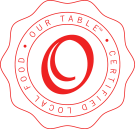Proteins are built by connecting repeating building blocks, called amino acids. Each protein is unique in its amino acid composition and three-dimensional shape. Protein shape is tightly related to its function in the body and misshapen proteins will malfunction.
When we eat a meal that contains protein, digestive enzymes break it down into its components, the amino acids. For this reason, dietary protein itself does not operate functionally in the body. It is the individual amino acids that will be absorbed by the body into our cells and repurposed to build our own proteins. You can imagine this process as breaking down a pirate ship made of Lego pieces and then using those pieces to build an airplane. The Lego pieces are the individual amino acids. There are 20 different amino acids, some of which are considered essential amino acids, and must be obtained through dietary sources of protein (our body cannot manufacture them). This is why it is important to not only consume adequate amounts of protein but to also consider its quality (amino acid composition) and bioavailability (how easily it can be absorbed and utilized by the body) to minimize the possibility of becoming deficient in certain amino acids.
THE MANY ROLES OF PROTEIN IN THE BODY
From a physiological perspective:
*Some proteins play a structural role. For example, collagen is the main structural component of skin, cartilage, ligaments, tendons, and bone.
*Contractile proteins such as myosin and actin are key to muscle contraction.
*Antibodies are immune system proteins needed for defense.
*Some hormones such as insulin and the growth hormone are proteins.
*Some proteins act as transporters in the body. For example, hemoglobin transports oxygen in the blood.
*Proteins can also act as storage depots. For example, ferritin stores iron.
*Chemical reactions in our body happen at a really fast rate thanks to catalytic proteins, whose role is to speed up chemical reactions. For example, lactase is the catalytic protein that breaks down the sugar lactose.
From a dietary perspective:
*Protein tends to be filling and satisfying, regulating hunger.
*Protein consumed in a meal helps decrease the rate of sugar absorption, helping maintain more stable blood sugar levels than if carbohydrates are eaten alone.
*Our body uses protein preferentially for its many structural and functional roles, and not for energy. Instead our cells use carbohydrates and fats preferentially for energy.
DIETARY SOURCES OF PROTEIN
*Animal sources of protein include beef, pork, lamb, buffalo, wild game, poultry, fish, eggs, and dairy foods. Remember to choose quality over quantity when it comes to animal products. Wild caught, pastured raised, and grass-fed animal products are healthier than those industrially produced.
*Plant sources of protein include nuts, seeds, beans, legumes, whole grains, tofu, and algae like spirulina. Because plants are typically low in saturated fat and they contain fiber and antioxidants (in addition to protein), I recommend eating plant protein sources every day!
- Soy protein is the most nutritious of the plant proteins as it to contains essential amino acids and it is easy to digest. Soy protein is similar in quality to animal sources like eggs, milk, and meat. It is also high in minerals.
- Rice protein is the least sensitizing and most easily digestible protein source available. Rice allergy is rare in Western countries. However, rice allergy is increasing in Japan. Rice protein extract is ideal for nutritional management of food allergies. However, it is low in two essential amino acids (threonine and lysine).
HOW MUCH PROTEIN SHOULD I EAT? AND WHEN SHOULD I EAT IT?
*The average US adult consumes over 100g of dietary protein per day. This is nearly twice as much as the recommended dietary allowances range of 46-55 g. What determines the optimal amount of protein needed in the diet? This comes down to multiple factors including age, activity level, weight pregnancy and lactation, fitness goals, and health status (certain health conditions such as kidney disease warrant lower protein consumption). The generally accepted recommendation for daily protein intake is 0.8 g per kg of body weight in adults.
I recommend eating some amount of protein throughout the day and specially at breakfast times and as a snack.
*The most common breakfast choices in the US tend to be carbohydrate heavy (think cold cereal, granola, bagels) leading to a spike in blood sugar. To minimize blood sugar spikes first thing in the morning, breakfast should be a combination of protein, fat, fiber, and complex carbohydrates.
For example, you can add nut or seed butter to your morning whole grain toast and top it with fresh berries instead of using jam. This meal includes a combination protein, fat, fiber and a low glycemic fruit that is packed with antioxidants!
*Snack time is also another important moment to reach for protein (and some fat) in place of starchy, salty items such as potato chips and crackers.
A boiled egg, unsweetened yogurt, or a handful of nuts are all filling and satisfying high protein snacks.
HERE ARE SOME SIMPLE HIGH PROTEIN RECIPES TO TRY THIS WEEK
*Lemon kale salad with avocado and chickpeas (18g protein per serving)
*One pan salmon with rainbow vegetables (34g protein per serving)
*Hawaiian BBQ tofu and veggie bowl (20g protein per serving)
NUTRITION FUN FOR THE KIDDOS
*Get science-y with seeds! Help your child pick two fruits and two vegetables that have seeds (e.g. apples, stone fruits, and bell peppers). Put them in charge of cleaning, cutting (under supervision and using child appropriate tools), and deseeding the fruit or vegetable. This activity can be used as:
1. a journaling experience by writing about the different types of seeds, how many are in each fruit or vegetable, what do they look like, etc.
2. an art project by sketching the fruits and vegetables and the seeds they contain.
3. a math activity by counting the seeds
4. a more advanced math activity by creating a chart that compares number or size of the seed across the different fruits and vegetables.
*Get creative at snack time. Try making easy animal faces with different fruits. Bonus points for adding a source of protein into the design! For example, can you add any seeds or nuts? Or maybe some yogurt?
| Recipes High In Protein.pdf |






 RSS Feed
RSS Feed